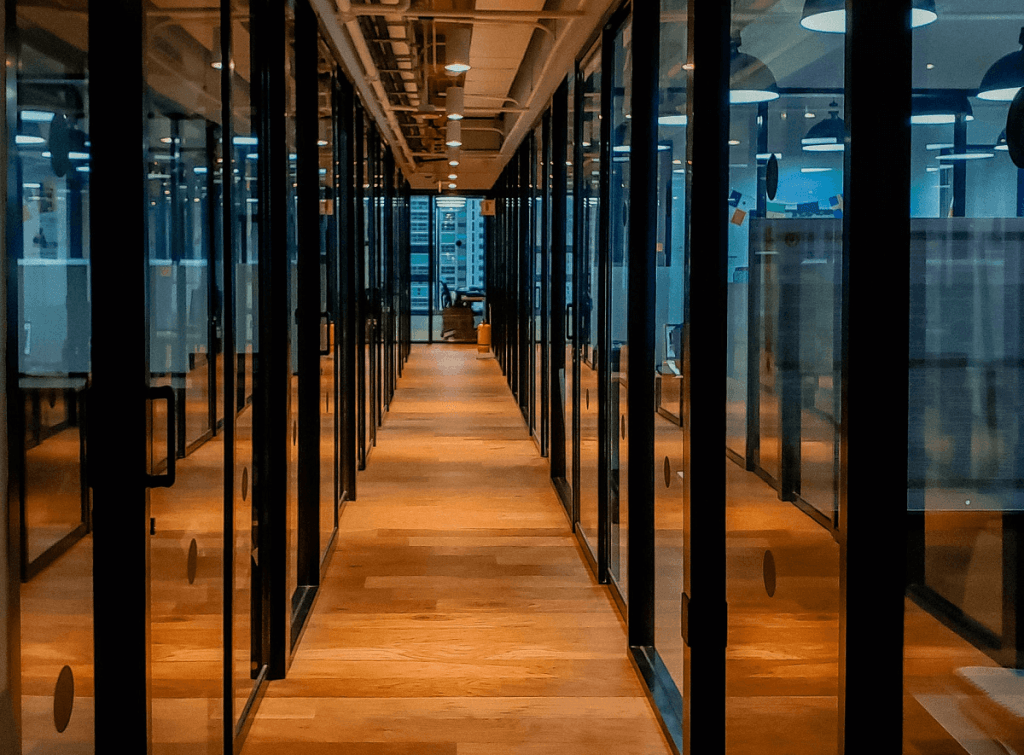Meeting spaces range from large conference rooms to small huddle spaces and transition areas in order to address an organization’s various meeting needs. All meeting spaces regardless of size and scope must include technology to enable content sharing and meeting engagement.
How easily teams and their tech interact with these meeting spaces impacts overall meeting engagement and productivity. The tech in a meeting space will either enable decision making and innovation or impede it.
On average, around 8 minutes are wasted in every meeting trying to connect to meeting room technology.
In fact, the anxiety of interacting with meeting space technology is so great that 68% of respondents in this study feel it is very likely that they will experience some tech issues during a meeting.
One key to ensuring consistent and successful meetings regardless of the meeting space is standardization of the design, technology, and workflow of all meeting spaces within the organization. Standardization offers an easy solution that bypasses the need to learn new systems with each meeting space configuration. There is no reason to require meeting participants to learn a new technology workflow dependent on the type of meeting space they use.
The Benefits of Standardizing Your Meeting Spaces
Increases productivity of your team.
The more time it takes to connect with in-room technology, the less time there is to focus on the work at hand. Standardizing meeting space tech means employees can walk into any space in your building and feel confident they know how to connect quickly and easily.
Reduces the burden on IT staff.
Using the same technology in all meeting spaces decreases the demand on IT resources. IT can learn one system making it easier to help when needed while also freeing up their time to focus on creating optimization plans. While Facilities may be the lead in overall meeting room budget and planning, it’s best to include additional stakeholders – especially IT or AV – when determining meeting room technology needs.
Avoids compatibility problems.
Using disparate technology in a variety of spaces is sure to cause compatibility issues at some point. Making the mistake of purchasing a system that’s not compatible with your current systems could end up costing thousands –even tens of thousands –of dollars to resolve.
How to Standardize Your Meeting Space
Understand which tech employees use.
There’s no sense in encumbering meeting spaces with equipment that’s rarely used. Take the budget that would have been used on unwanted equipment to make the tech that is the most used more pervasive. If you have usage analytics, then you already have this information at your fingertips. If not, then a simple survey among users will provide the needed insights.
Centralize your tech purchases.
Don’t allow individuals or departments to source and buy meeting space technology themselves. Make meeting space tech purchasing decisions at an enterprise level and, when possible, favor solutions that are intuitive and consistent across devices.
Create a meeting space policy.
Set a meeting space policy for the entire company. The policy should include minimum software and hardware specifications include security objectives as well as budget guidelines for each meeting space type. Each tool considered for implementation would need to be able to meet or exceed the stated guidelines prior to approval.
Consider future needs.
Organizational needs are likely to evolve over the coming years, and meeting space technology should be able to keep up with changing needs easily. Scalability and ease of upgrade are essential to drive efficiency and cost-effectiveness. Meeting space technology based solely on hardware (i.e., a typical AV black box) is costly and difficult to upgrade, while software-focused solutions offer much more flexibility in upgrade options and scalability.
Mersive’s Solstice wireless collaboration platform takes meeting collaboration and productivity to a new level serving as the ubiquitous platform for all modern meeting space needs. From large conference rooms to huddle and transition spaces, Solstice includes a host of features that support the freedom for any number of users to share any amount of content throughout a meeting. Additional features including Solstice Ink –our revolutionary annotation tool–, as well as calendar integration and digital signage support, deliver added value to meeting space displays when not in use. To learn more about Mersive and see how we can help you standardize your meeting space technology portfolio, please visit our website.

